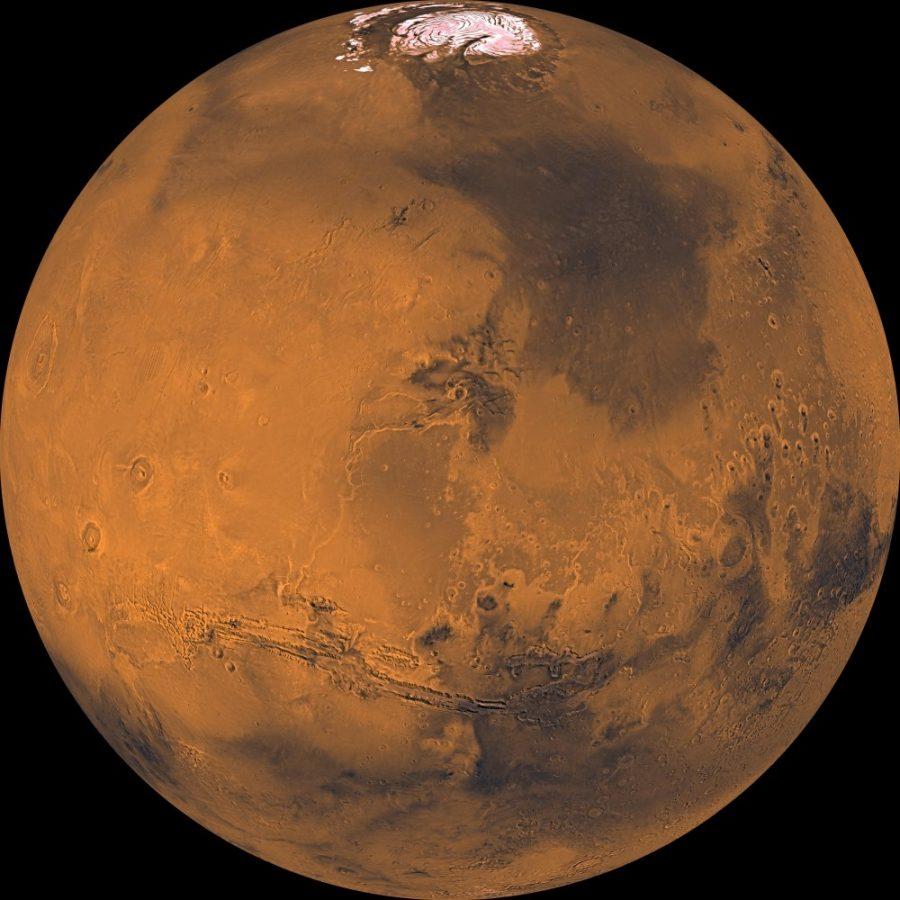The red planet has been featured in the news quite a bit recently as technology improves and new discoveries are made. Mars has fascinated readers and scientists for years because of the possibility that long ago it may have had liquid water on its surface and may, at one time, have had the potential to support life.
Mars is smaller than Earth and cooled much faster than our planet after it was fully formed. This rapid cooling made for a lack of magnetic field to protect mars from intruding solar winds and radiation, which may have helped strip the atmosphere even faster than previously thought.
Recently, UA experts have collaborated with NASA to investigate how exactly Mars lost its atmosphere and how it has affected the features of the planet over time. Roger Yelle, a professor in UA’s Lunar and Planetary Laboratory, has been working with NASA in studying how particles and gases leave Mars’ atmosphere and how this effect may have turned Mars into the chilly, lifeless, desert-like scene it is today.
“The general picture is that right now Mars can’t support liquid water because the atmosphere is too thin and it’s too cold, but a long time ago, 3.8-4 billion years ago, it seems like it did have liquid water,” Yelle said.
RELATED: OSIRIS-REx to search for Trojan Asteroids
Mars is remarkably similar to Earth in many of its features. However, Mars’ atmosphere is nothing like Earth’s. Part of the reason our planet is able to support life is because of the fact that the surface can sustain high volumes of liquid water, which is in part due to Earth’s protective atmosphere.
“So the question is what happened? Why did [Mars] have water then and not have water now, and why has the atmosphere changed?” Yelle said.

Mars has an extremely low-pressure atmosphere. According to Yelle’s recent research, the atmosphere most likely escaped over time.
The loss of protective gasses and elements would have had a profound effect on the climate and landscape of Mars over time. The question then becomes: Did enough of Mars’ atmosphere escape to cause the change in landscape and water retention and to cause the relative thinning researchers see today?
“It’s something that all atmospheres do. The Earth’s atmosphere is escaping to space; every atmosphere is escaping to space at some rate,” Yelle said.
Mars is thought to have an internal, metallic core which separated from the rest of the planetary materials during its formation. Before the planet cooled completely, there was magmatic activity under the surface, made evident by the largest known volcano in the solar system, Olympus Mons. There is also evidence for past tectonic activity—another signifier of a hot interior—in the form of the largest known canyon, Valles Marineris.
RELATED: UA researchers explore polar wander on Pluto
Mars doesn’t have any recent tectonic activity, although there is speculation that, early in its life, the planet may have had two slow-moving tectonic plates. Due to the loss of gasses and the subsequent atmospheric thinning, the planet core cooled, halting these life-sustaining processes.
The magnetic field of Mars has been weak for the past 4 billion years.
On Earth, the magnetic field, which helps protect the atmosphere from solar winds, is caused in part by the constant, slow-moving convection of the molten mantle, which also helps drive the tectonic movements. Because of the early cooling, Mars has no global magnetic field to protect the planet from solar winds. It is possible that the atmospheric loss of Mars is partly from solar winds coming into contact with upper atmosphere.
When the solar wind hits the upper atmosphere of a planet, there are variety of things that are associated with that which can cause the atmosphere to escape.
“… We call [one of these effects] sputtering, and it’s kind of like throwing a basketball into a swimming pool,” Yelle said, “you make a big splash and some of the water escapes.”
So when the solar wind hit Mars’ upper atmosphere, some of the atmospheric molecules may have escaped. This and other processes have been stripping Mars of its atmosphere for millions of years. Studying the potential effects of solar winds on Mars’ atmosphere could help researchers predict how Earth might interact with solar winds over time.
At this point, it is hard to pinpoint the exact cause of the thinning of Mars’ atmosphere, but the answer may be a combination of multiple factors. Learn more about UA’s research efforts on Mars and other planets here.
Follow Rebekah Ulmer on Twitter.









